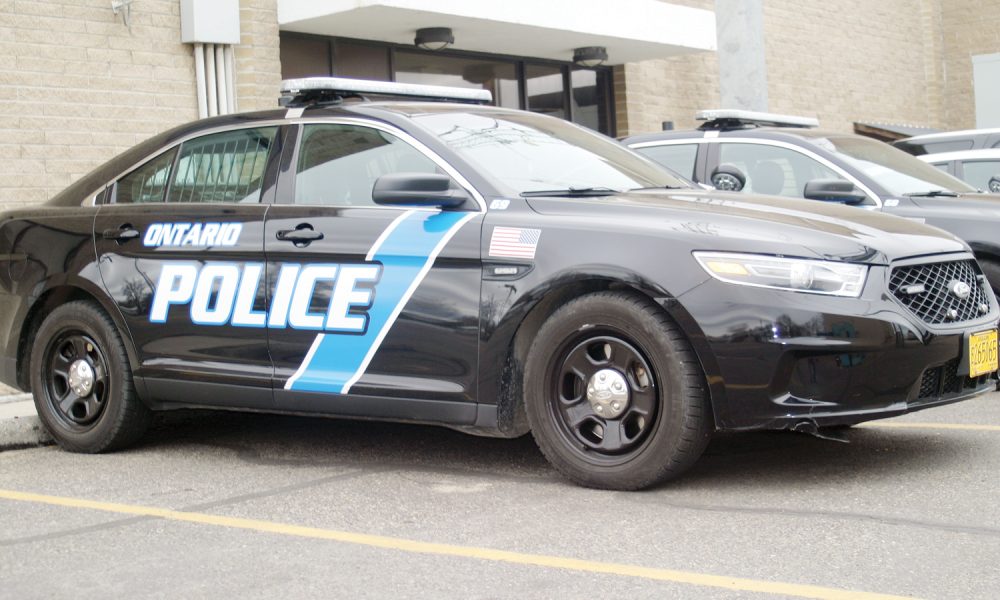
By Pat Caldwell
The Enterprise
ONTARIO – Policing would dramatically increase, the city’s indoor pool would come back to life and more streets would get fixed if a 1 percent sales tax is implemented, Ontario city officials say.
Money for the expanded city spending would come from $3.8 million a year the city estimates it would collect from the sales tax.
The Ontario City Council approved the tax last fall with the intent to start collecting it last January. The city put that on hold when petitioners referred to voters a measure to stop the tax. The measure will be on the primary ballot in May.
City officials had promoted the sales tax as a way to stop an erosion of city services. They had said that without the tax, the city could eliminate police and fire jobs and make other cuts to city services.
Now, they have penciled out how the sales tax money would avoid those cuts and allow the city to grow its budget. According to a Malheur Enterprise analysis, the city’s general fund would grow an estimated 52 percent with the new money.
Ontario City Manager Adam Brown said questions from the public prompted the city to lay out how it would use the money.
“It is the same stuff we’ve been talking about,” Brown said. “We just put some hard numbers to it. Citizens have been saying, ‘be more specific’ so that is what we did.”
About a third of the new tax money would be allotted to the police department. The agency would add a captain, two detectives and three patrol officers.
Brown said such an expansion is justified by a climb in the total number of calls for service.
The Police Department reported to the Ontario City Council last month that there had been a 9.7 percent increase in the number of calls from 2016 to 2017 for police. The totals climbed from 10,193 in 2016 to 11,009 in 2017.
The department report showed increases in traffic stops, traffic and parking citations, and school cases. Total arrests declined from 907 in 2016 to 838 in 2017.
“We are just not able to serve all the calls we get. We are not able to proactively police. We are a reactive force right now,” said Brown.
Councilor Dan Capron said a rise in crime in Ontario demands more police. Taxpayers, he said, will see real results from a beefed-up police force.
“Hopefully they’d expect to see a drop in crime and we wouldn’t be spread so thin and the police wouldn’t be their own detectives,” said Capron.
Currently patrol officers function as detectives.
Ontario Mayor Ron Verini agreed.
“The crime stats from the last 12 months are justification enough. Our property crimes have increased,” said Verini.
The city, however, couldn’t provide information on how it calculated what additional resources were needed or what citizens would see with more police at work.
However, some central questions remained unanswered regarding crime in Ontario.
The Enterprise sent questions to Brown last week to clarify the justification for more police but by Tuesday hadn’t received a detailed response.
The Enterprise asked about the current response time for police to calls and how much that would be reduced and the benefit of responding faster to non-emergency calls. The city also was asked about its expectations for detectives, including how many more crimes would be solved and arrests made.
The extra police will also help to address “bigger problems,” in Ontario, Brown said.
“There are gangs in Ontario,” said Brown.
“Obviously we want more foot soldiers on the streets,” said Verini.
According to the city’s analysis, if the sales tax is not approved, four police officers would be cut or a new public safety fee would be imposed to forestall the cuts.
“Just to maintain the present force we have without any increase is $400,000,” said Verini.
Verini said the sales tax analysis is aimed at building public confidence in the sales tax.
“We’ve put a lot of the concerns of the public to rest. The biggest concern was they wanted to vote on it themselves,” Verini said. “Well, through the referendum it will be on the ballot,” said Verini.
Verini said another major public worry was that the city council could increase the tax rate. To answer that, he said, is the city submitted its own ballot measure, locking the 1 percent rate into the city charter. The rate then couldn’t be changed without a public vote, he said.
The city analysis shows intentions to put more than $400,000 into the aquatic center to maintain the building and restore the pool. The center was closed in 2013 because of a lack of funding.
“The aquatic center is important not only for our elderly but for our very young,” said Verini.
Capron said opening the aquatic center is a high priority for the council. Capron said he and Councilor Marty Justus would push “for the pool to open sooner, rather than later.”
The city also plans to eliminate system development charges assessed on developers to help pay for city streets. The analysis estimated the move would drop about $100,000 in fees collected from developers.
Brown said he has asked the state Elections Division to check the city’s analysis.
“It is a service the state provides that we are stating something without prejudice, that it is fact-based. The numbers are final, but it is the way it is written. We want to make sure we haven’t written it in a biased way,” said Brown.
The city was forced to rewrite the sales tax property measure after its initial language confused the intent of the vote.
that because it will be part of the (city) charter,” said Verini.
Jackson Fox, an Ontario resident who led the effort to push the sales tax onto the May ballot, said earlier this week he had not seen the cost analysis.




